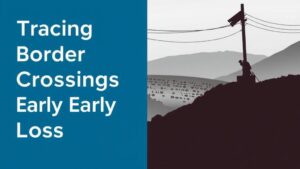Using Old Trail Maps and LiDAR to Locate Overgrown Relic Sites
Using Old Trail Maps and LiDAR to Locate Overgrown Relic Sites
With the proliferation of digital technology, archaeological methods have significantly evolved, enabling researchers to discover and explore historical sites that have been obscured by vegetation or time. One innovative approach involves the integration of old trail maps with Light Detection and Ranging (LiDAR) technology to uncover and analyze overgrown relic sites. This article aims to explore the effectiveness and application of these methods, providing a comprehensive overview of their implications in the field of archaeology.
The Historical Context of Trail Maps
Trail maps, often created in the 19th and early 20th centuries, serve as crucial historical documents that record the landscape and its changes over time. e maps can provide insight into early settlement patterns, trade routes, and resource distribution. For example, the 1875 GLO (General Land Office) maps of the American West document pathways and settlements that have since become obscured by urban development or natural vegetation.
By comparing these historical documents to modern geographical data, researchers can identify relic sites that are no longer visible on contemporary maps. This technique has been employed successfully in various regions, including the Appalachian Trail, where extensive studies have revealed settlements that were previously unrecorded.
Understanding LiDAR Technology
LiDAR is a remote sensing method that uses laser light to densely sample the earth’s surface, generating precise, three-dimensional information about the shape and surface characteristics of the landscape. In archaeology, LiDAR can penetrate vegetation, allowing for the visualization of features hidden beneath tree canopies and dense underbrush.
Research has demonstrated that LiDAR can detect subtle ground variations that indicate the presence of human-made structures. In a study conducted in the Mayan rainforest, LiDAR uncovered thousands of previously unknown archaeological features, such as roads and pyramids, confirming its value in remote archaeological investigations.
Combining Old Trail Maps with LiDAR
The intersection of old trail maps and LiDAR provides researchers with a powerful toolset for locating overgrown relic sites. By aligning the data derived from LiDAR with historical routes indicated on old maps, researchers can prioritize areas for field investigation that are likely to contain significant archaeological remains.
For example, in a 2021 project in the Southern Appalachian region, researchers utilized LiDAR data to analyze areas marked on historical trail maps. identified three distinct areas where farming remnants and small settlements were likely to exist. Subsequent field surveys confirmed the presence of remnants such as stone walls and agricultural terraces.
Case Studies and Practical Applications
- Cerro de Lirio, Guatemala: A recent project employed LiDAR in conjunction with historical Spanish colonial maps to locate hidden structures and pathways of an ancient Maya city that was previously lost under dense tropical forest.
- Scotland’s Forgotten Landscapes: Researchers have used LiDAR to reveal the foundations of long-lost settlements described in 18th-century maps, elucidating the social dynamics of the period.
Challenges and Limitations
While the combination of old trail maps and LiDAR is promising, it is not without its challenges. The accuracy of historical maps can vary significantly, and discrepancies may arise when aligning them with modern data. Plus, LiDAR has limitations in interpreting certain types of vegetation and site configurations.
To mitigate these challenges, researchers must employ a multi-faceted approach that integrates field surveys with historic documentation, thus validating LiDAR findings with on-the-ground evidence.
Conclusion and Future Directions
The integration of old trail maps and LiDAR technology represents a transformative advancement in archaeological practices. By effectively locating overgrown relic sites, researchers can gain a deeper understanding of historical landscapes and human behavior. The implications extend beyond archaeology into broader historical scholarship, environmental preservation, and cultural heritage management.
Future research should focus on refining the techniques used in data integration and validation, ensuring that findings are as accurate as possible. Also, expanding the use of these methods to under-researched areas may uncover significant sites that contribute to our understanding of global history.
To wrap up, combining old trail maps with LiDAR technology not only enhances the capacity to locate and study overgrown relic sites but also underscores the value of interdisciplinary approaches in archaeology.



